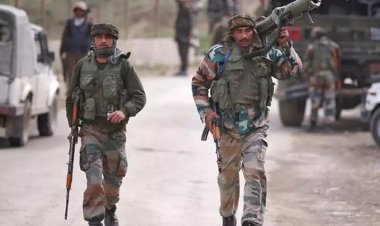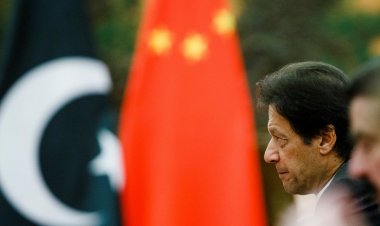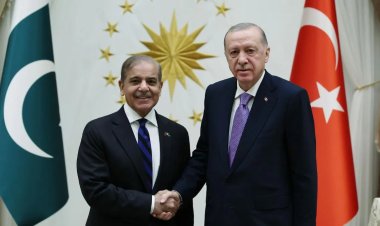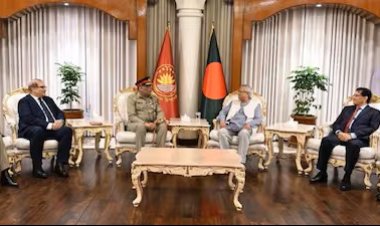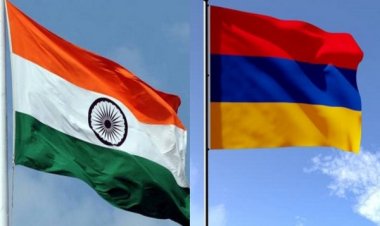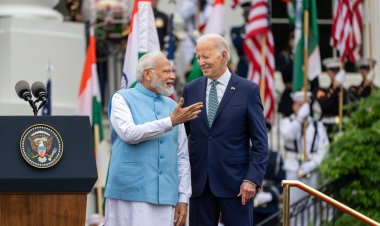Rajouri and Kandi attacks: Kashmir Militancy is bouncing back with New Tactics
The author analyses how Kashmir militancy is bouncing back with new tactics.
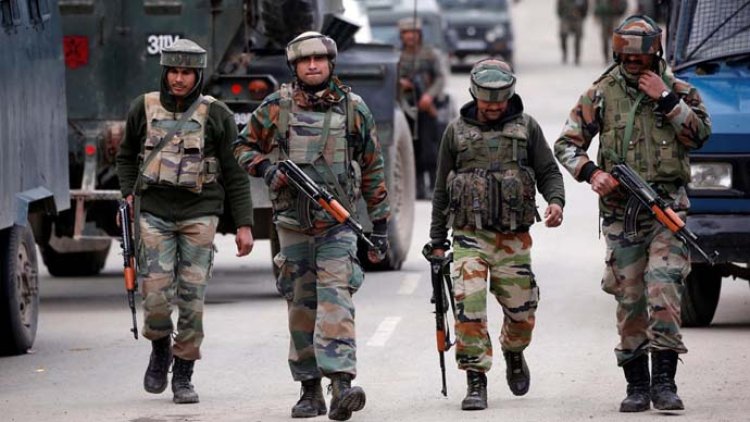
Analysis
By Abhinav Pandya
Post-370 abrogation in August 2019, in popular perception and the narrative projected by the mainstream media the terror groups are facing financial and recruitment challenges, tough action by the Special Forces, dwindling local support resulting in an existential crisis for the Pakistan-sponsored proxy war. Recurring statements by the senior state officials, Pakistan’s domestic instability and fledgling economy, India’s perception management exercises, strengthening narrative of development, fashion parades, cinema and G20 has further bolstered the aforementioned narrative in popular perception.
The reality
Seen in the backdrop of this popular perception, the recent terror attacks in Bhatta Durian, Rajouri and Kandi appear as alarming developments signaling the resurgence of militancy. However, a closer look at the statistics defies the popular perception and unfolds a different story.
Terrorist incidents of killing display an upward trend 2015 onwards. From 86 in 2015, they peaked at 206 in 2018. In 2019, In 2019, 135 terrorist killings took place. However, after 2019 i.e., after the abrogation of article 370, there is not a significant decline in the terrorist killing incidents. In 2021 the figure was 153 and in 2022, it was 151. The major decline has only been registered in the cases of stone pelting and social agitation, which can also be felt during a random field visit to Kashmir. However, militancy and terror groups have remained largely active. Since 2019, Pakistan-sponsored terrorists have killed civilians, non-Kashmiri labourers, minorities and pro-India politicians and activists. By August 2022, 14 Kashmiri pundits and several Hindus including the non-Kashmiri professionals and migrant labourers were killed by the militants.
The use of drones to smuggle weapons, drugs and cash has become a major challenge for the Indian SFs. Only between September 9 and 16, eight drone sorties carrying 80 kg of weapons were dropped inside the Indian territory on the Punjab border. Since then, the drone threat has increased manifold, to the extent that future likelihood of drones-based terror attacks is one of the prominent threats worrying the intelligence community. The number of arms recovery incidents increased from 90 in 2019 to 209 in 2022.
Hence, it appears that there is hardly any erosion in Pakistan’s will and determination to sustain militancy or even remotest realisation and acceptance that article 370 is a history now and militancy is an exercise in futility. If at all any perceptible change has come then it is in the domain of strategy and tactics. Pakistan’s expertise in improvising and innovating militancy is nothing new. Time and again, since 1990, Pakistan has improvised and made changes in its tactics and strategy to make militancy more lethal, deep-rooted and long-lasting.
Recent attacks in Poonch-Rajouri
In a recent field research visit to J&K, I interacted with several senior and mid-ranking SFs personnel responsible for planning and executing counter insurgency operations. A common theme that has emerged from all those informal interviews is that there has been a major setback in the human intelligence (HUMINT) resource base of the SFs. In the recent attacks in Pooch-Rajouri belt, there were hardly any HUMINT-based actionable inputs. A range of factors can be held accountable for this. Over the last six-seven years the SFs have majorly relied on TECHINT-based operations. Reportedly, with the help of Israeli technology to break encrypted communication channels, the SFs have been immensely successful in neutralising a record number of militants.
However, this happened at the cost of traditional counter-terrorism methods which mostly relied on HUMINT based on infiltration and exfiltration of terrorist groups and defections. Such methods were devised, developed and implemented from 1990 to 2015. The officers who employed such tactics were mostly locals who had a robust knowledge of the local geography, history, cultural, social and political dynamics. Also, they had an insightful understanding of the workings of the Kashmiri mind and the collective psychology of the society which helped them in recruiting and cultivating assets, and keeping them motivated and committed.
Over the years, this system developed its own fatigue and failings because of a large number of double agents who were simply squeezing money out of the secret funds and mostly working for the adversaries. The officers were also not immune to corruption and on several occasions indulged in money-minting through illicit drugs and weapons smuggling, fake encounters and dummy infiltrations. As a result, there was a major policy churn at the highest policy making levels. The larger perception and narrative in the intelligence community turned against such traditional methods. The idea of recruiting double agents came to be scoffed at. The fundamental philosophy of the counter-terrorism operations and intelligence gathering underwent a sea change. Also, it brought a heightened sense of risk and fear among those officers who were running HUMINT-based operations, human assets including the double agents that if on account of any confusion, misunderstanding or sheer bad luck they are nabbed by the NIA, which has emerged as an extremely powerful entity in anti-terror investigations, then they will be disgraced for life and at worst face rigorous imprisonment and investigation. As a result, they blocked their human assets from any cell phone communication or any other form of contact. A senior police officer with 20 years of counter terrorism operations experience in J&K told me that he had to delete the mobile numbers of at least 200 human assets who were working for him and had a strong network in terror training camps, infiltration and narcotics smuggling networks. Also, when the officers wanted to facilitate their old assets in petty law and order cases or incentivise through pecuniary benefits, they began to be severely discouraged by the senior leadership in the SFs.
All this has resulted in a near total destruction of the HUMINT base. On the other side, the militants and their PoK-based masters and ISI handlers have also changed their methods of communication and operation.
Firstly, after August 5, 2019, several new outfits mushroomed with secular-sounding names such as The Resistance Front (TRF), Kashmir Janbazz Force, Mujahiddin Gazwat ul Hind, People’s Anti-Fascist Front PAFF) etc. Most of these groups are loosely affiliated to parent outfits such as TRF is linked to LeT and the PAFF is reportedly a proxy of Jaish. However, the true nature of these linkages is not fully known due to the lack of adequate HUMINT. Nevertheless, it is confirmed that they are the part of ISI’s new game plan of floating outfits that appear local and non-religious, to elude the Financial Action Task Force sanctions.
Secondly, as per some of the Ikhwanis who have infiltrated the terror groups in the past, the new army chief of Pakistan Asim Muneer is extremely religious-minded. In their words, he is fanatic jihadi-type character. Reportedly, he has activated all the terror training camps in PoJK and appointed 10-12 persons on each launching pad to facilitate maximum infiltration. Unlike before the 370 abrogation, the new recruits do not announce their joining of terror groups on social media platforms such as facebook, whatsapp and twitter. They do not release stylish videos with special effects of their groups sitting in apple orchards and conducting exercises. My informed interlocuters told me that there has been a massive infiltration after the abrogation of article 370; however, most of the FTs have been radio silent as per the instructions from their handlers. Terror groups have sent huge consignments of weapons through drones. Some operatives also suggest that they have also made the beginnings of using drones for infiltration. This may sound a bit far-fetched; however, it is not unlikely in the future.
The dynamics of recruitment and conducting operations have also changed. In the ongoing trends, generally a handler sitting in Pakistan is in touch with 70 to 80 youngsters in Kashmir through some encrypted communication apps which are customised and not known to the agencies. Some of these handlers are old JeM and LeT veterans who have re-joined the terror groups. They give brief, subtle and limited instructions regarding the recruitment and delivery of weapons. For movement, they send geospatial coordinates which minimised the need for using local guides and Over Ground Workers (OGWs). The individuals who are in communication with the Pakistan-based handlers are oblivious of each other’s identity and whereabouts. Most of these individuals are ‘hybrid or part-time militants.’ They are educated and middle-class youngsters who are either students, scholars or professionals. They have a dual identity i.e.; they live a routine life as a white-collar civilian. However, when they are assigned a task, someone provides the information about the target’s whereabouts and movement patterns and someone delivers a weapon to them. They execute a task and then return the weapon at a pre-assigned location to a designated individual. Normally these delivery persons are young boys and girls of 15-20 years of age, who are given an ordinary looking parcel and asked to hand it over to a certain individual.
Previously, most of these tasks i.e., logistics, weapons, movement, target reconnaissance and surveillance, and shelter were arranged by hardened and trusted OGWs who had worked for the terror groups for decades. While discussing OGWs some legendary names can hardly be ignored such as Noor Mohammad Tantrey or Noora Trali, the four-feet Jaish OGW who single-handedly revived Jaish in South Kashmir after escaping from his payroll. Later, like most other OGWs, he became an active militant and was killed by the SFs. In this post-370 militancy, one rarely comes across the old OGWs being used. In addition to the new modus-operandi discussed in the previous paragraph, terror groups have recruited a new set of OGWs and mostly replaced the older ones. The new OGWs are clean-shaven young student-like operatives quite unlike the previous set of OGWs who were mostly bearded maulvis, Jamaat rukoons and affiliated individuals donning a religious and traditional attire. It is also pertinent to mention here that evenJamaat has gone into a hybrid mode. After the ban, its second rung leadership has dispersed into the rural areas and as per the instructions from Aabpara, they are consolidating themselves. Their cadres and leaders don a western attire and deliberately stay away from displaying overt religious appearance.
What worsens the possibility of enhancing HUMINT is the new practice of giving critical postings to young IPS officers from the J&K and AGMUT cadre. Many of these officers lack sufficient experience and training. They come to J&K as adventure tourists impressed by the thrilling world of intelligence, weapons and encounters. Because of this the older hands with decades of counter terror experience who are now shunted to insignificant postings feel very demoralised and marginalised.
In my recent field visit, I found that the intelligence agencies are missing some of the entities which are hiding in a plain sight. Notably, Tablighi Jamaat (TJ) and its cadres have played a crucial role in radicalising the socio-culture scenario of Poonch-Rajouri and Doda-Kishtwar which was traditionally a Gujjar-Muslim dominated region. The Gujjar were more concerned about their tribal identity than the religious identity. However, over the last two decades TJ has drastically altered their cultural and behavioural patterns visible in overly Islamic way of lifestyle. Though no concrete evidence linking the TJ with terrorists has come out, their role in providing logistics, shelter and moving money cannot be ruled out. TJ is Deobandi offshoot and Jaish and its proxy PAFF, responsible for the recent attacks in Poonch-Rajouri also adhere to Deobandi ideology. I have discussed in detail about the Jaish links with Deobandi institutions and clerics in the Kashmir valley in my upcoming book on Jaish. Besides, there is a strong likelihood of terror groups recruiting the pro-Khalistani young Sikh radicals of Poonch-Rajouri region as OGWs for the logistics support.
An important feature of the post-370 militancy as confirmed by intelligence agencies and some of the older OGWs who I interviewed is that an overwhelmingly large number of the recent infiltrators are battle-hardened mujahidin from Af-Pak region who put up a fierce resistance with Taliban against the American troops. Secondly, they are using the weapons, ammunition and NVDs left by the US forces. In the recent Rajouri and Kandi attacks, the militants used armour piercing steel bullets left by the US forces.
The local sentiment
Any discussion on the recent militancy trends cannot be complete without addressing the issue of local sentiment. Though after the abrogation of article 370 the tightened security measures, internet lockdown and fatigue ensured that there are no massive violent protests and agitations, the feeling of discontent and anger has only grown in intensity and fervour over the last three years. Despite the lofty claims about development made by the state government, the situation on the ground is pitiable. The condition of roads, electricity and other infrastructure related matters is appalling. There is no political representation, the bureaucrats have become supremely powerful, apathetic and arrogant. Such a situation is ripe for massive social unrest and local support for militancy. Given Pakistan’s internal woes, it is highly likely that the Pak army will try to orchestrate a massive social unrest and give a strong fillip to militancy.
Conclusion
Amidst these disturbing developments the good news is that the terror groups are finding it difficult to recruit the local youth. This is largely due to fatigue, and the lull in recruitment and terror attacks which came after August 5, 2019. Pakistan’s internal crisis has also shaken the local populace’ faith in Pakistan in liberating Kashmir. First it was jolted in Kargil defeat, then majorly dented after the abrogation of article 370 because of Pakistan’s silence. However, still a significant number of Kashmiris, at a subconscious level firmly believe that the Pakistani army is stronger and more determined than India’s vegetable-eating Hindu army, and Pakistan’s nuclear arsenal is superior to that of India’s. This insight was shared by a local Kashmir businessman Ashfaq (name changed). He finally suggested something and while writing this piece that his suggestion can be the best conclusion.
He suggested that Pakistan is neck-deep in its internal woes and this is the best time for India to make a significant strike which will give a final blow, shattering beyond redemption, an average Kashmiri’s faith in Pakistan’s capability to deliver Azadi at their doorstep.
Disclaimer: This paper is the author's individual scholastic contribution and does not necessarily reflect the organization's viewpoint. The article was originally published by Firstpost.


